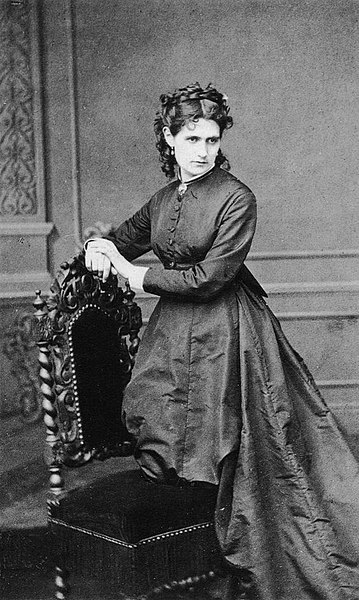
Born: 14 January 1841, Bourges
Died: 2 March 1895 (aged 54)
Period: Impressionism
The Life of Berthe Morisot
Berthe Morisot was a pioneering French painter who played a crucial role in the Impressionist movement. Born in Bourges, France, into a well-off family, Morisot was introduced to art at a young age. Her early education was typical of women of her class, but her passion for painting soon became evident. Along with her sister Edma, she began to pursue art seriously, studying under Camille Corot, a leading figure in the Barbizon school who significantly influenced her early work.
Morisot’s early works were in the traditional style, but she evolved to embrace the looser brushstrokes and lighter palette of the Impressionists, a group with whom she became intimately connected. In 1864, Morisot’s work was accepted for exhibition in the highly prestigious Salon de Paris, marking the start of her public career as an artist.
Morisot’s involvement with the Impressionists began in the early 1870s. She was closely associated with the group, not only through her art but also through personal connections; in 1874, she married Eugène Manet, the brother of Édouard Manet, one of the leaders of the movement. Unlike many of her contemporaries, Morisot was able to exhibit in all but one of the Impressionist exhibitions held between 1874 and 1886. Her work was distinguished by its focus on domestic life and the intimate portrayal of women and children, subjects she depicted with sensitivity and insight. Morisot’s technique was characterized by its rapid brushstrokes and the play of light in her compositions, hallmarks of the Impressionist style.
Despite facing the societal constraints of her time, which often limited women’s opportunities in the arts, Morisot achieved significant recognition and success during her lifetime. She was admired for her ability to capture the subtleties of everyday life and the fleeting moments of beauty in the ordinary. Her paintings often featured members of her family and domestic scenes, rendered with a freshness and spontaneity that were innovative at the time.
Morisot’s contributions to the Impressionist movement were significant, not only in terms of her own work but also in her support of her fellow artists. She was instrumental in organizing the Impressionist exhibitions and was a key figure in promoting the group’s work.
Tragically, Morisot’s life was cut short when she died of pneumonia at the age of 54. Despite her relatively brief career, her legacy is profound. Morisot broke barriers for women in the arts and helped pave the way for future generations of female artists. Her work continues to be celebrated for its contribution to the development of Impressionism and its insightful portrayal of the nuances of 19th-century bourgeois life. Today, Berthe Morisot is recognized as one of the most important and influential female painters of her time, whose artistic achievements have earned her a place alongside the leading figures of the Impressionist movement.
Berthe Morisot’s Notable Works
Berthe Morisot was an integral figure in the Impressionist movement, known for her delicate brushwork, innovative use of color, and intimate portrayal of domestic life. Her works captured the essence of Impressionist sensibility with a distinct focus on the lives of women and children. Here are ten of Morisot’s most famous and celebrated works, each exemplifying her unique contribution to the world of art:
- The Cradle (1872) – This painting is one of Morisot’s most famous works, depicting her sister Edma watching over her sleeping daughter. It’s celebrated for its tender expression of maternal love and the delicate interplay of light and shadow.
- Summer’s Day (1879) – Set in the Bois de Boulogne park in Paris, this work captures two women in a boat, showcasing Morisot’s skill in depicting the leisure activities of the Parisian bourgeoisie with a light and fluid touch.
- Woman at Her Toilette (1875-1880) – This painting is a stunning example of Morisot’s interest in the theme of women in private, intimate spaces, executed with loose brushstrokes that beautifully capture the effects of light.
- Reading (1873) – Featuring Morisot’s sister Edma, this work is a quiet, introspective scene that reflects the peaceful solitude of reading. The composition and use of light exemplify Morisot’s skill in portraying indoor scenes.
- The Harbour at Lorient (1869) – An early work painted during a summer visit to Brittany, this seascape shows Morisot’s brother-in-law (and later husband), Eugène Manet, and highlights her ability to capture the light and atmosphere of the coast.
- In the Dining Room (1886) – Set in Morisot’s own dining room, this painting depicts a maid cleaning, showcasing Morisot’s interest in the lives of women from different social backgrounds and her ability to capture everyday moments with grace.
- The Butterfly Hunt (1874) – This lively outdoor scene of children chasing butterflies in a garden is a celebration of childhood and nature, rendered with the lightness and spontaneity that characterize Morisot’s work.
- On the Balcony, Paris (1872) – Depicting a woman and a child on a balcony overlooking the city, this painting is noted for its innovative composition and the way it captures the light and atmosphere of Paris.
- Hanging the Laundry out to Dry (1875) – This work is an exploration of the theme of women’s work, depicted with empathy and respect. Morisot’s use of light and shadow adds depth and texture to the scene.
- Eugène Manet on the Isle of Wight (1875) – This portrait of Morisot’s husband during their honeymoon on the Isle of Wight stands out for its relaxed intimacy and the subtle interplay of light and color, reflective of Morisot’s personal and artistic connection to her subject.
Morisot’s work is celebrated for its contribution to the Impressionist movement and its exploration of the themes of femininity, family, and domestic life. Her ability to capture the transient moments of everyday life with sensitivity and depth has cemented her legacy as one of the foremost female artists of her time.